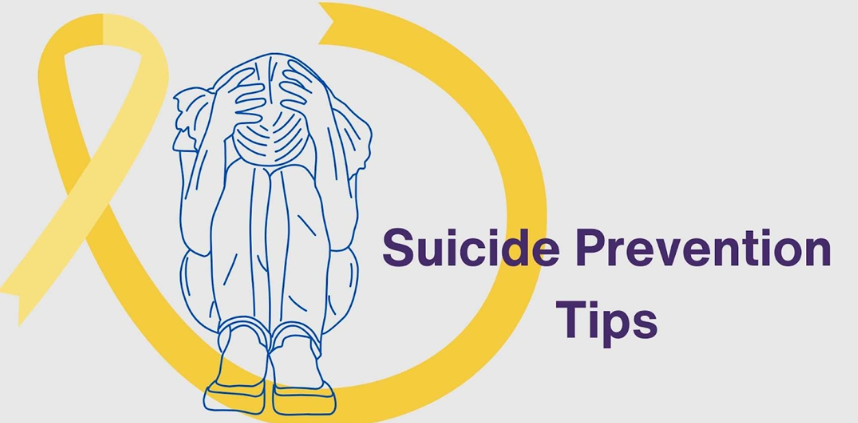Enhancing Suicide Prevention Efforts in India (GS Paper 1, Society)

Introduction:
- India faces a severe public health crisis with over 1 lakh suicides annually.
- Recent discussions have highlighted the urgent need for a more robust approach to suicide prevention.
- The National Suicide Prevention Strategy (NSPS), launched in 2022, aims to address this issue, but its impact has been limited.
- This article explores the current state of suicide prevention in India, the challenges faced, and potential solutions for improving mental health support.
Understanding the National Suicide Prevention Strategy:
- The National Suicide Prevention Strategy (NSPS) is a comprehensive framework designed to reduce suicide rates by 10% by 2030.
- It emphasizes a collaborative approach, involving various sectors and stakeholders to achieve its goals.
Vision and Objectives:
The NSPS envisions a society where individuals receive adequate support and value their lives. Key objectives include:
- Establishing psychiatric outpatient departments in all districts within five years through the District Mental Health Programme (DMHP).
- Integrating mental health education into all educational institutions within eight years.
- Creating guidelines for responsible media reporting and restricting access to means of suicide.
Current Suicide Trends in India:
According to the National Crime Records Bureau (NCRB) report for 2022, India experienced over 1.7 lakh suicides. The suicide rate increased from 10.2 per 1,00,000 in 2019 to 11.3 in 2022. Notable statistics include:
- Demographics: Daily wage earners, agricultural laborers, and farmers are the most affected groups. Self-employed and salaried professionals, unemployed individuals, and students also represent significant percentages of suicide victims. Women, particularly homemakers, are heavily impacted, with Maharashtra and Tamil Nadu reporting the highest numbers of suicides.
- Causes: Major causes include family problems, unemployment, financial issues, and illness. Substance abuse, marriage-related issues, and dowry-related problems also contribute. The rise in suicides among young women is linked to societal pressures, gender discrimination, and domestic violence.
Challenges in Suicide Prevention:
- Resource Limitations: India’s healthcare system struggles with a shortage of mental health professionals and inadequate access to mental health services, especially in rural areas.
- Data Gaps: Incomplete data and under-reporting hinder the understanding of the suicide crisis and the development of effective interventions.
- Political Commitment: There is a lack of strong political will and commitment to suicide prevention, leading to gaps in policy implementation and support.
- Media Reporting: The media often lacks guidelines for responsible reporting on suicides, which can affect public perception and awareness.
Ongoing Initiatives in Suicide Prevention:
Several initiatives aim to address the mental health crisis in India:
- National Mental Health Programme (NMHP): Includes the District Mental Health Programme (DMHP), which provides outpatient services, counseling, and inpatient care at the district level.
- National Tele Mental Health Programme: Launched in 2022, this program offers mental health counseling and care services nationwide, with significant call volume handled by December 2023.
- KIRAN Helpline: A 24/7 toll-free helpline providing mental health support.
- Ayushman Arogya Mandirs: Health centers upgraded to offer comprehensive primary health care, including mental health services.
- Manodarpan Initiative: Provides psychosocial support during crises, such as the COVID-19 pandemic.
Legal Framework:
- Section 309 of IPC: Previously criminalized suicide attempts, but has been subject to debate. The Bharatiya Nyaya Sanhita, 2023, removes this provision but retains penalties for suicide attempts intended to influence public servants, aligning with the Mental Healthcare Act, 2017.
Future Directions:
- Workplace Wellness: Introduce mental health support in workplaces, particularly high-stress environments. Implement public health strategies, including gatekeeper training and awareness programs.
- Enhance Mental Health Infrastructure: Improve access to mental health services, particularly in underserved areas. Increase the number of trained professionals and develop targeted interventions for high-risk groups.
- Address Underlying Causes: Focus on job creation, poverty reduction, gender equality, and combating domestic violence. Promote mental health education and stress management techniques.
- Leverage Technology: Expand digital mental health services, develop user-friendly apps for self-care, and utilize data to target interventions effectively.
Conclusion:
- Addressing the suicide crisis in India requires a comprehensive approach involving improved resource allocation, data collection, political commitment, and responsible media reporting.
- By enhancing existing initiatives and implementing targeted strategies, India can make significant strides in reducing suicide rates and providing better support for those in need.


